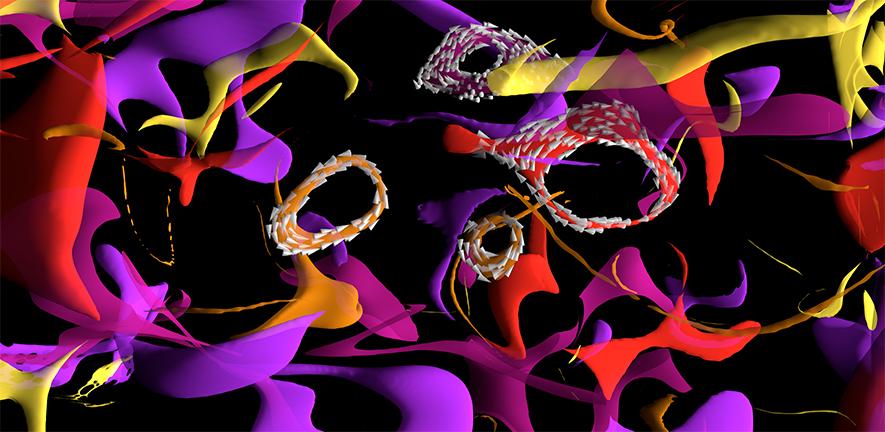Research Highlights
Magnetic vortices come full circle
Recent experiments have provided the first observations of three-dimensional magnetic "vortex rings" predicted theoretically in TCM some two decades ago.

Magnets often harbour hidden beauty. Take a simple fridge magnet: somewhat counterintuitively, it is ‘sticky’ on one side but not the other. The secret lies in the way the magnetisation is arranged in a well-defined pattern within the material. More intricate magnetisation textures are at the heart of many modern technologies, such as hard drives. Now, an international team of scientists from the University of Cambridge, the Paul Scherrer Institute (PSI), ETH Zurich, the Donetsk Institute for Physics and Engineering in Ukraine and the Institute for Numerical Mathematics RAS in Moscow have discovered unexpected magnetic structures inside a tiny pillar made of the magnetic material GdCo2.
The researchers observed sub-micrometre loop-shaped configurations, which they identified as magnetic vortex rings. Vortex rings are familiar to everyone who has seen smoke rings being blown, or who has watched dolphins producing loop-shaped air bubbles, for their own amusement as much as to that of their audience. The newly discovered magnetic vortex rings are captivating in their own right. Not only does their observation verify predictions made some two decades ago within the TCM group, settling the question whether such structures can exist. They also offered surprises. In particular, magnetic vortex rings have been expected to be a transient phenomenon, but in the experiments now reported, these structures turned out to be remarkably stable. The stability of magnetic vortex rings could have important practical implications. For one, they could potentially move through magnetic materials, as smoke rings move stably though air, or air-bubble rings through water. Learning how to control the rings within the volume of the magnet can open interesting prospects for energy-efficient 3D data storage and processing.
Claire Donnelly, Konstantin L. Metlov, Valerio Scagnoli, Manuel Guizar-Sicairos , Mirko Holler, Nicholas S. Bingham, Jörg Raabe , Laura J. Heyderman , Nigel R. Cooper , Sebastian Gliga, Nature Physics 30 November 2020 (online).
[Adapted from a PSI press release.]See also the Cambridge Research and ScienceAlert features.